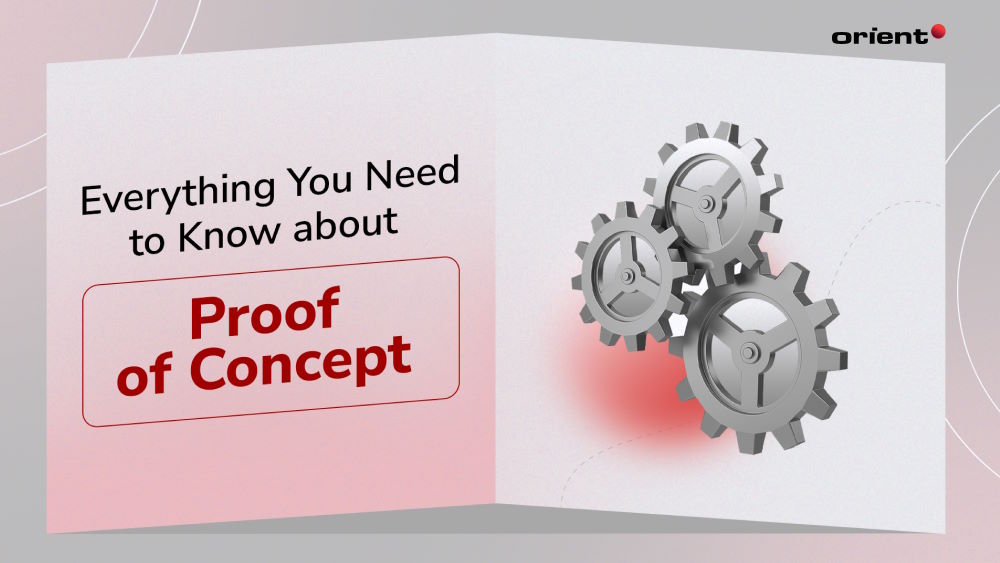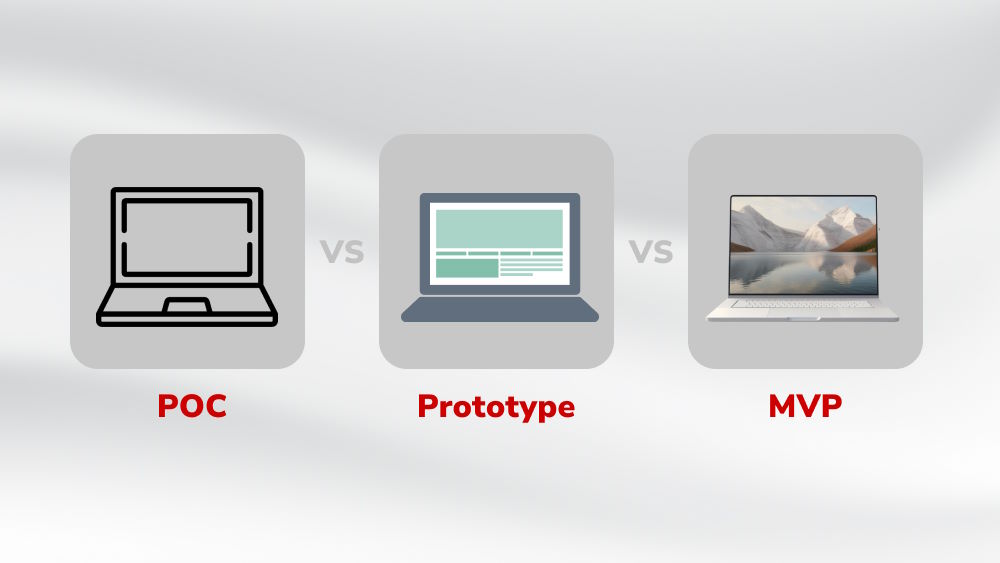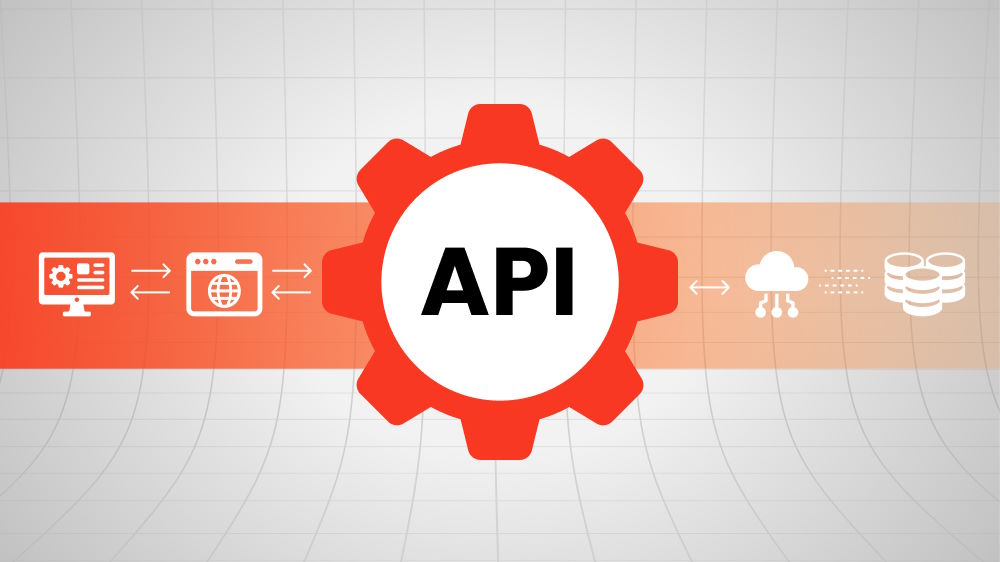PoC in IT: What It Is, Why It Matters, and How to Do It Right

Content Map
More chaptersHave you ever had a brilliant idea for an IT project but were unsure if it would work in practice? Or has your development team ever invested a lot of time and money into a software development project or a product development process, only to find out that it did not meet the expectations of your users or customers? If so, you are not alone. According to a Gartner report, many IT projects fail due to unsuccessful proofs of concept, which is a growing problem as digital business opportunities frequently require a successful proof of concept (PoC).
But what exactly is a PoC, and how can businesses use it to their advantage? In this article, we’ll explore the concept of a PoC in IT, its importance, and how to do it right. From understanding the benefits to identifying the right approach and avoiding common pitfalls, we’ll provide you with a comprehensive guide to successfully implementing a PoC in your organization. So, let’s dive in and discover the power of proof of concept in IT!
What Is a Proof of Concept (PoC)?

A proof of concept (PoC) is a preliminary demonstration or experiment that verifies the feasibility and potential of a concept or idea in practical terms. It is a way to validate the viability and effectiveness of a proposed solution or technology before committing significant resources to its full-scale business development. For some proof of concept examples, a pharmaceutical company may use a PoC to evaluate the feasibility of a new drug development process, while a financial institution may use a PoC to assess the potential benefits of implementing a new security protocol.
In the context of IT projects, a PoC is a method of testing the feasibility and viability of an IT project idea before investing more resources into the development process. It allows you to test your hypothesis about a mechanism of action and demonstrate the potential value of your solution to your target audience or market. A PoC can also help you reduce risks, validate assumptions, gain feedback, and secure funding for your IT project.
Why Does PoC Matter in IT?
The primary purpose of conducting a proof of concept is to reduce the uncertainties and risks associated with implementing new technologies or solutions within a software development life cycle. It enables stakeholders to gain confidence in the feasibility, viability, and potential benefits of the concept before committing to its full development and implementation.
The goals of a proof of concept often include:
- Assessing technical feasibility: A proof of concept helps determine whether the proposed solution can be implemented using the available technology stack, infrastructure, and resources. It enables the identification of challenges, limitations, and potential obstacles early on.
- Validating functionality and performance: By creating a small-scale version of the proposed solution, a proof of concept allows stakeholders to evaluate its core functionalities, features, and performance characteristics. It helps assess whether the solution meets the intended requirements and objectives.
- Demonstrating value and benefits: A proof of concept provides an opportunity to showcase the potential value and benefits of the concept to key stakeholders, including decision-makers, investors, and end-users. It helps communicate the practical implications and advantages of the proposed solution.
Proof of Concept vs. Prototype vs. MVP in IT

In the previous section, we explained what a PoC is and why you should conduct one for your IT project. However, a PoC is not the only way to test and validate your IT business idea. There are other methods, such as prototype and minimum viable product (MVP), that can also help you achieve similar goals. But what are the differences between these methods, and when should you use them in IT?
Proof of Concept (PoC)
- Purpose: The primary goal of a PoC is to validate the technical feasibility and potential value of a concept. It focuses on testing the core concept’s viability and demonstrating its potential in a controlled environment.
- Scope: PoCs are typically limited in scope, targeting specific aspects or functionalities of the concept.
- Execution: PoCs are often exploratory and experimental, aiming to prove the concept’s fundamental principles. They may not be fully functional or optimized for production use.
- Timing: PoCs are usually conducted early in the software development process to assess the concept’s viability before committing to further investment.
Prototype
- Purpose: Prototypes are more advanced than PoCs and focus on validating the concept’s design, functionality, and user experience. They help gather feedback, test usability, and refine the product’s features.
- Scope: Prototypes cover a broader range of features and interactions compared to PoCs. They aim to represent the final product’s key functionalities.
- Execution: Prototypes are often interactive and simulate the user experience of the final product. They may or may not be fully functional, depending on the project’s needs.
- Timing: Prototypes are typically created after a successful PoC and are used to gather user feedback, iterate on the design, and refine the concept before proceeding to full-scale development.
Minimum Viable Product (MVP)
- Purpose: An MVP is the most mature stage among the three approaches. It represents a functional and marketable version of the product with essential features to meet the core user needs.
- Scope: MVPs encompass a broader range of features than prototypes and aim to provide a usable product to early adopters or a target market segment.
- Execution: MVPs are designed to deliver value to users and generate feedback for further product development. They are more polished and feature-complete compared to PoCs and prototypes.
- Timing: MVPs are typically developed after successful iterations of prototypes. They are used to validate the product’s market fit and gather insights for future enhancements.
The following table summarizes the differences between a PoC, a prototype, and an MVP:
| Method | Scope and Scale | Objective and Outcome | Stage and Time |
|---|---|---|---|
| PoC | Smallest and simplest | Test feasibility and viability, demonstrate value and impact | Early, before investing more resources |
| Prototype | Larger and more complex | Test usability and desirability, get feedback and insights from users or customers | Middle, after validating idea and before launching to market |
| MVP | Largest and most complex | Test demand and viability, get data and feedback from market | Late, after building and testing solution and before scaling up |
Depending on your IT project goals and needs, you can use one or more of these methods to test and validate your solution. However, you should not confuse or mix up these methods, as they have different purposes and outcomes.
How to Conduct a Proof of Concept in IT
Preparing for a PoC
Before conducting a PoC, it is essential to prepare adequately. This preparation phase involves defining the product idea, identifying the success criteria of the PoC, and selecting the right team to carry out the project. A product’s idea can be generated from multiple sources, such as studying the market, receiving input from customers, or engaging in brainstorming sessions within the company.
Once the product idea is defined, it is vital to identify the specific goals of the PoC. These goals may include testing the feasibility of the product, evaluating its potential performance, or assessing market demand. Selecting the right team is also crucial, as the success of the PoC will depend on the expertise and skills of the team members.
Designing and Executing the PoC
Once the preparation phase is complete, the next step is to design and execute the PoC. This phase involves developing a detailed plan that outlines the steps required to test the product idea. The plan should include the scope of the PoC, the resources required, and the timeline for completion.
It is also essential to identify the key metrics that will be used to evaluate the success of the PoC. These metrics may include performance metrics, such as response time or throughput, or business metrics, such as customer satisfaction or return on investment (ROI). Once the plan is in place, the team can begin executing the PoC, following the defined steps and carefully documenting the results.
Analyzing and Evaluating the Results
After the PoC is complete, the next step is to analyze and evaluate the results. This phase involves reviewing the data collected during the PoC and comparing it to the defined metrics. It is essential to identify any issues or limitations that arose during the PoC and determine whether they can be addressed through further development. The team should also assess the potential impact of the product on the business, including its potential to meet market demand and generate revenue.
Making Decisions Based on the PoC
Based on the results of the PoC, the team can make informed decisions about whether to proceed with the development of the final product. If the PoC is successful, the team can use the data to refine the product idea and create a detailed development plan. If the PoC is not successful, the team may need to reevaluate the product idea or consider alternative solutions. In either case, the PoC provides valuable insights that can help guide the development process and increase the likelihood of success.
Conclusion
In conclusion, conducting a proof of concept is an essential step in the software development process. It helps organizations validate their product ideas, test market demand, and minimize risks associated with software development projects. By following the steps outlined in this article, organizations can increase the chances of success for their IT projects.
If you are considering a proof of concept for your software development project, Orient Software is an experienced software development company that can help. Our team of experts is familiar with the proof of concept process and has a track record of delivering successful IT projects. Get in touch with us to find out more about our services and how we can support you in realizing your company’s objectives.







